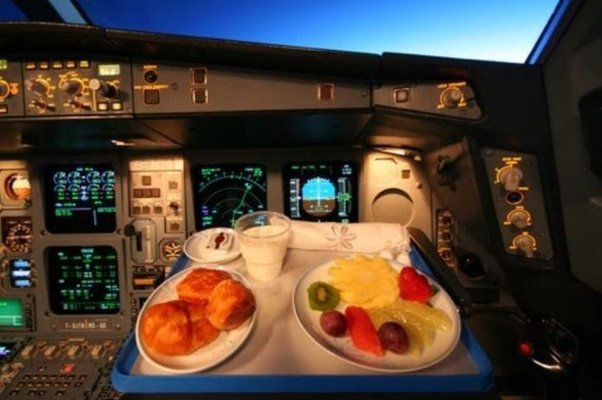Why pilots are served different meals on a flight
Things could have turned out very differently for one crew after the Captain suffered food poisoning mid-air. Jimmy Wanjala info@airspacenews.co.ke Did you know that although two pilots operate any given flight, they never eat the same kind of food? If the airline is serving beef or chicken, one will take chicken and the other beef. One time, an ex-military pilot, an instructor and a training first officer were on duty on a Fokker 27-500 cargo plane. Their mission was to fly cargo from Jomo Kenyatta International to Mwanza International Airport in Tanzania. The Captain had never been to Mwanza before and was excited to sample the sights and cuisine of the coastal town. On arrival, the captain left the First Officer to oversee the offloading of the cargo and took a Bajaj (motorcycle) to the nearest eatery and ordered the biggest fish. The gentleman enjoyed his meal and the hospitality synonymous with Tanzanians. Meanwhile, the First Office, keen to make an impression on the pilot, ensured the aircraft was cleaned properly and refuelled after the cargo was offloaded. Hours later, the captain got back with a plastic toothpick dangling from his mouth. He also carried a big fish wrapped in a black paper bag to take back home. “Haya, twende (okay, let’s go),” he motioned to the First Officer. Soon, the massive PT6 engines of the iconic Fokker 27 cargo plane roared to life, and the aircraft took off. As the now empty aircraft climbed to 19,000 feet for the final cruising altitude of 21,000 feet, the captain started showing discomfort. He had been suffering all through after take off but kept a straight face, hoping his rumbling stomach would calm down. At 20,000 feet, All hell broke loose. “Wah, my brother tutafika kweli (My brother, are we going to make it, really)?” The severity of the situation finally hit the First Officer, who had been at the controls after take-off when the Captain dashed from the cockpit to the back of the plane with the black paper bag after emptying it of the fish, much to the amusement of the officer and the loader. He couldn’t help cursing the manufacturer for removing the lavatory to make more room for cargo as he “fired away” into the paper bag. Only if the cockpit windows could open at this attitude, rendering the rest of the aircraft uninhabitable in the wake of the Captain’s “business” at the back. At first, the First Officer thought this was part of the Captain’s plot to test his response to an emergency mid-flight. The Captain tried to make his way back to the cockpit a few times but had to rush back to the back as his situation worsened. As the aircraft made the final descent at the Jomo Kenyatta International Airport, the Captain had to shout instructions from the back to the First Officer for a smooth landing. Talk of baptism by fire for the First officer! How differently things would have turned out had he shared the fish meal with the Captain. Now you understand why pilots don’t just eat anywhere or anything when travelling. In most instances, crews are advised to drink water or soda, especially during stopovers. And in case you are wondering why a plane would take off for the skies without a lavatory, manufacturers sometimes remove it to maximise space for cargo. As a result, most cargo aircraft have a short endurance time of around five hours. For most aircraft, fuel weight is also compromised to load more cargo into the aircraft. For example, if an aircraft takes five tonnes of fuel to fly for six hours, you can only take three tonnes of fuel if you are flying for two hours, allowing you to load more cargo depending on volume. For this and more stories, visit www.airspacenews.co.ke

